Let’s Meet Nelson, 4S7NE
While visiting Sri Lanka in December 2014, I met three generations of local Amateur Radio operators. Nelson, 4S7NE, represents the old-school approach to our hobby.
He is 75 years old and frequently on the air, in spite of many basic obstacles. His equipment and antennas are not in good shape, the weather phenomena make things even worse.
It is very humid and stormy there. Nelson lives in a rural area some 30 km (20 miles) NE of Colombo, the capital city.
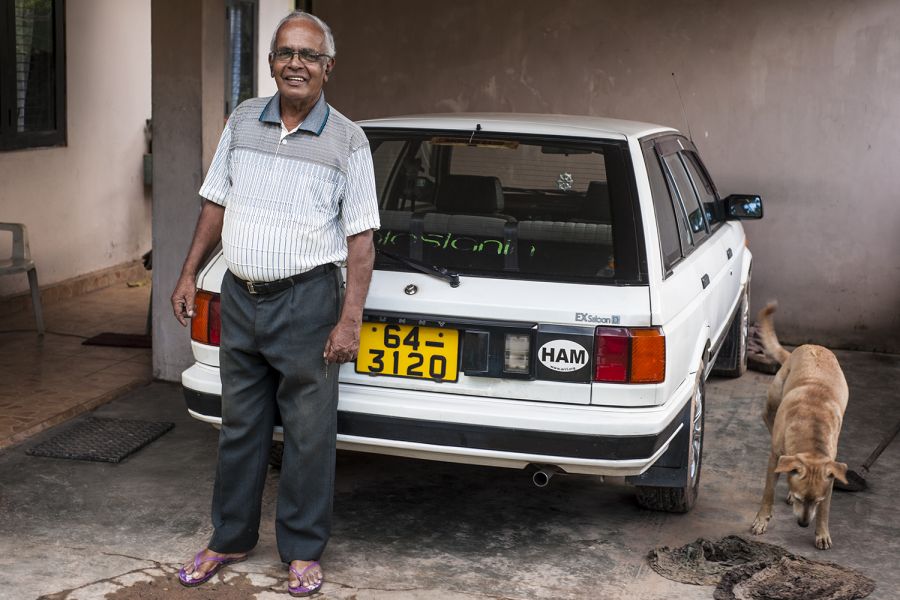
Nelson, 4S7NE, here in front of his house, shows his life-long hobby on the back of his car.
While still a teenager, Nelson was employed at the telecom company, working with radio transmitters and receivers. After a few years, he finally received his amateur wireless permit in 1961 at the age of 21.
The shortwave radio was still a sensitive and strategic technology, associated chiefly with military purposes. There was quite a lot of military surplus equipment in Sri Lanka, then called Ceylon, after WWII. Nelson had a classic HRO receiver and a home-made transmitter. In the middle of 1960s, he built a home-made SSB transmitter, the first such rig in Sri Lanka. In 1982, Nelson had a chance to buy a commercially made amateur transceiver while visiting Japan. It was a Kenwood TS-130, which generated countless QSOs, until it was given away to another local radio enthusiast.
Now, there are two ICOM transceivers in the radio room of 4S7NE. Both of them need, however, be repaired. The IC-756, a gift from visiting British radio friends, has a damaged display, while the older IC-746 was struck by a lightning and is not fully operative.
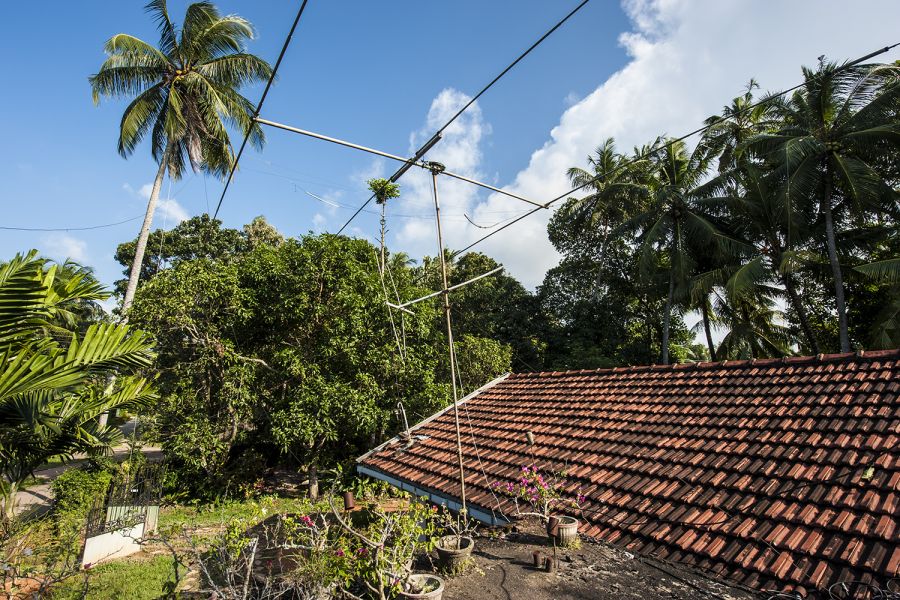
Antennas of 4S7NE are home-made, one directional Yagi and assorted wires among the trees. Nelson has antennas for all bands from 160 to 10 meters.
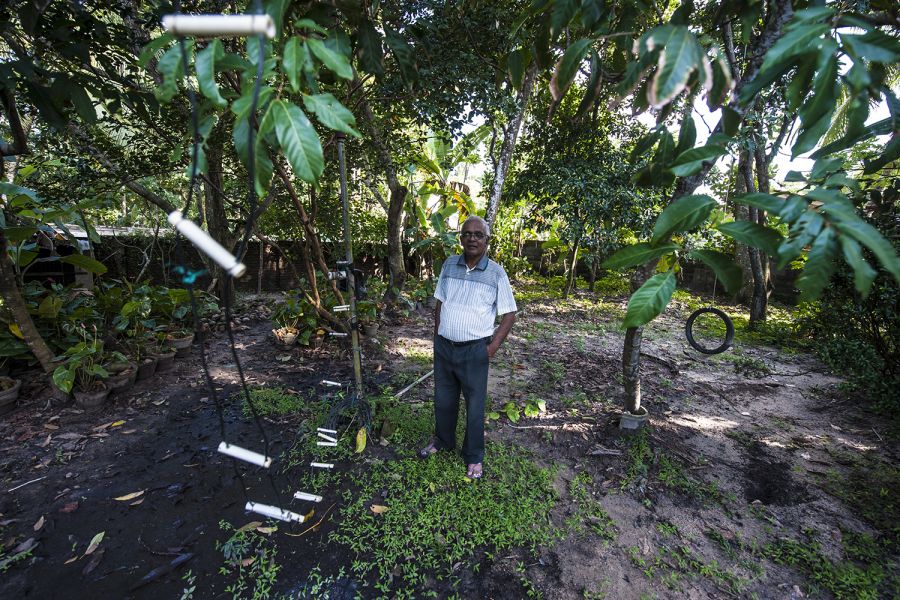
Wire antennas of 4S7NE struggle against the tropical vegetation of Sri Lanka.
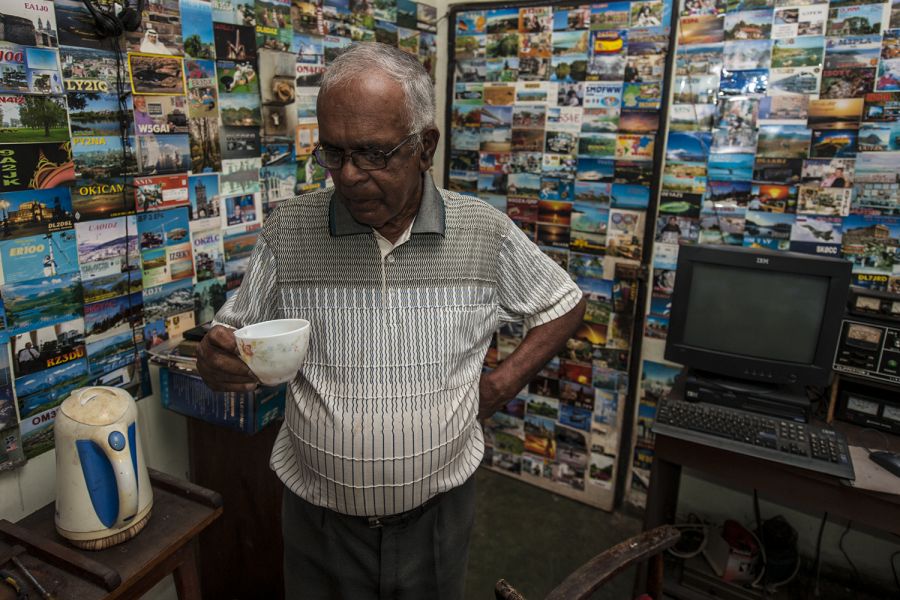
Tea drinking is widespread in Sri Lanka, and of course I was treated to a cup in the QSL-card-wallpapered radio room of 4S7NE. Local tea is considered to be the purest in the world.

All walls of Nelson’s radio shack are decorated with colourful QSL cards from all over the world. There are two clocks on the upper shelf, indicating the local time and presumably UTC. Local time is 5 hours and 30 minutes ahead of Greenwich, or simply +5.30 Z. The antique Dentron amplifier is rarely used, almost exclusively on the 160 meter band.
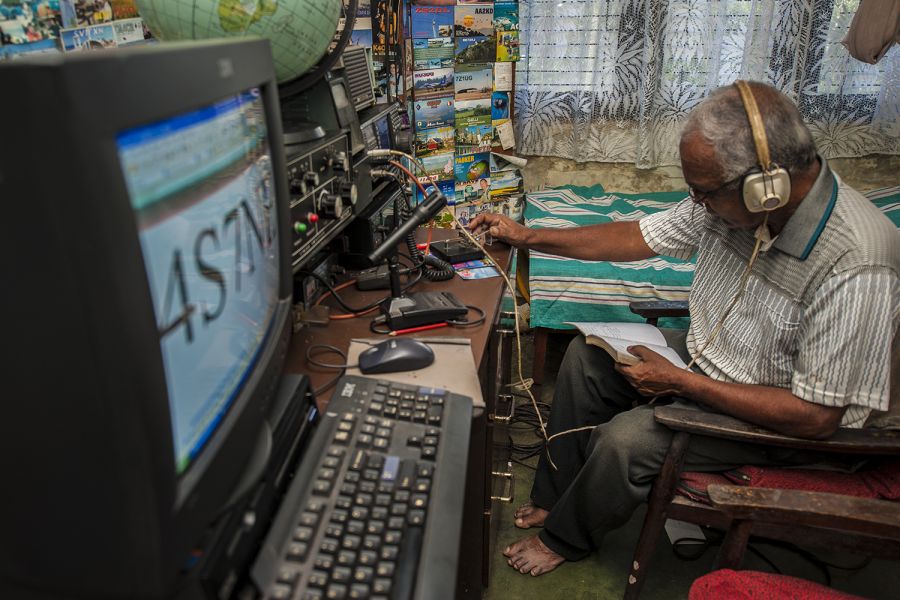
Nelson, 4S7NE, operates barefoot as you can see. He likes the old-fashioned way of sending by hand and receiving by ear. Honestly, this is exactly what I myself prefer.
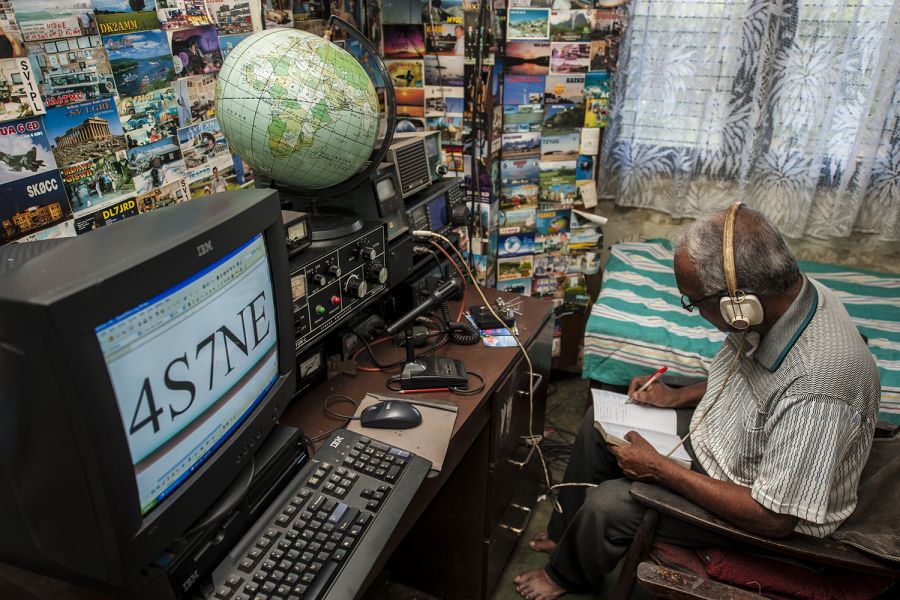
Even though there is a computer in the shack, Nelson logs his contacts by hand in a notebook. It is called pen and paper logging.
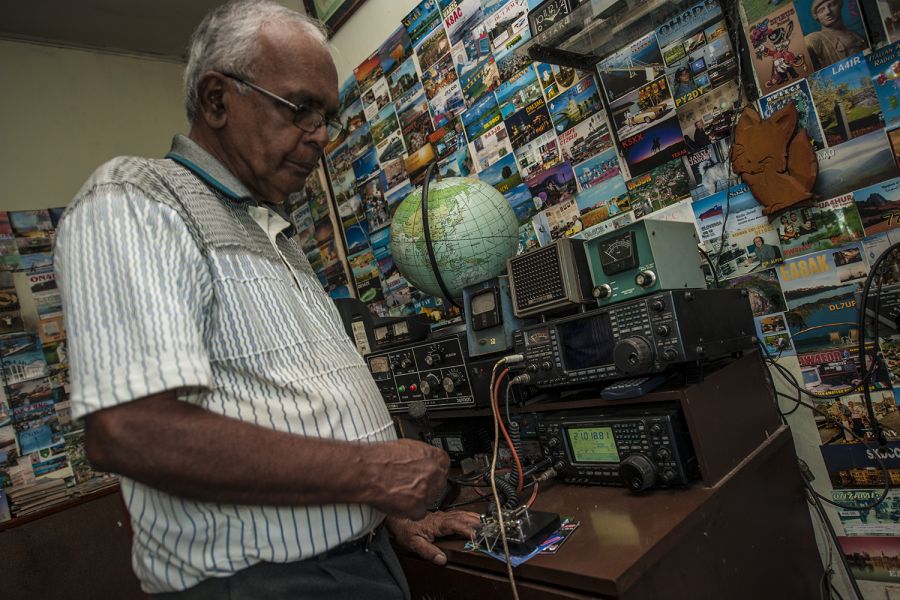
The IC-756 (up) works quite well, except for the dead display. So Nelson checks the frequency on the IC-746 (down), which has a damaged front-end.
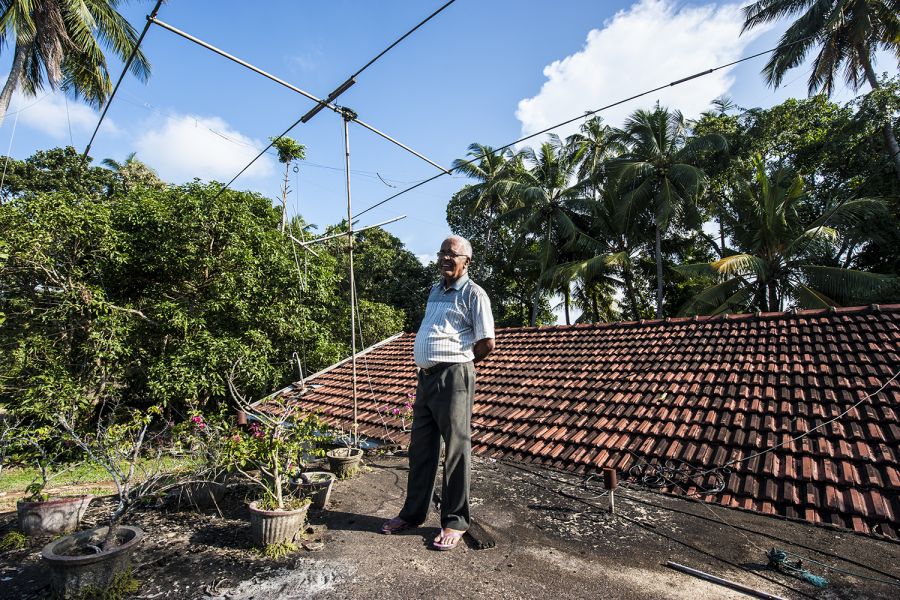
Luckily, there was some sunshine between the clouds and I could persuade Nelson to go on the roof. The supporting pipe is not high, but the advantage is easy access to the radiator for an Old Timer.

The family picture — Nelson’s wife, one of the dogs in the middle, and Nelson himself on the right. Time to say good bye.
I have visited some Amateur Radio operators in poorer countries and have some advice for visitors from developed nations. Try to get in touch with local people who are interested in the hobby and help them. Sometimes it can be a small component, sometimes the know-how, sometimes a helping hand.
Too many costly DXpeditions visit remote places and leave no trace, stir no interest in radio among the locals. Amateur Radio is extremely attractive to people living on islands or remote areas.
Amateur Radio is cheap and reliable as compared with commercial communications. However, learning how to use it is difficult without help. Books or Internet are fine, but practical instructions are priceless. Next time you plan a radio flavoured vacation, or a multi-operator expedition, try to devote some time to the local people, who already are or want to become radio amateurs. I still believe in friendship through Amateur Radio and there is no better way to make friends than to give help when needed.
Bottom line Sri Lanka
The island has a very rich and ancient history. Apart from being the biblical Eden, there are many artefacts giving evidence of powerful and advanced civilisations.
Europeans set up colonies here in the 16th century. First, the Portuguese, later the Dutch and finally the British. In some areas Portuguese surnames are still very common. After WWII the country became independent in 1948, but remained a dominium of Great Britain. Since 1978, the full name of the country is the Democratic Socialist Republic of Sri Lanka with Buddhism as the officially recognized religion.
The present day Radio Society of Sri Lanka — RSSL — was formally created in 1974. However, first attempts to bring radio enthusiasts together took place in 1949.
In 1952, the old prefix VS7 for The British Crown Colony of Ceylon was replaced by 4S7.
At present, there are over 100 members of the society, which is affiliated with the International Amateur Radio Union (Region 3). The HF beacon station 4S7B is operative in the NCDXF network and located near Colombo. There are two fixed VHF repeaters at high elevation, and the Society recently received a portable VHF repeater from a Swiss friend, to be used in emergency situations.
Henryk Kotowski, SM0JHF
January 2015
Exclusive for DX News

